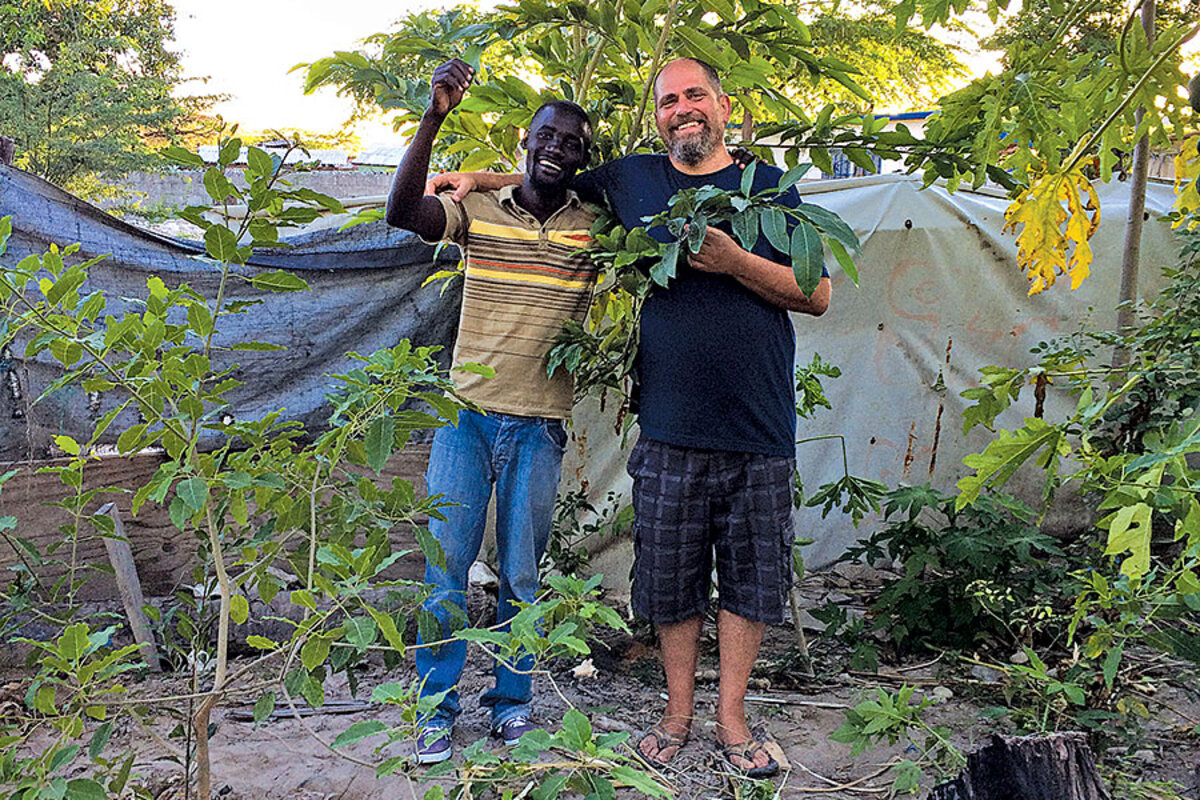At Sadhana Forest, trees spring from once-barren land
Loading...
Aviram Rozin was excited. He had just returned from Haiti where the 80,000 Maya nut trees that volunteers with Sadhana Forest had planted there during the past five years had started to flower. Before long each tree would be producing huge quantities of nuts high in protein and other nutrients. One tree could supply enough yearly protein for a family of five.
The nonprofit Sadhana Forest, cofounded by Mr. Rozin and his wife, Yorit, follows three simple strategies:
ã Plant indigenous trees in arid regions that once had been forested but have become barren, useless land.
ã With few exceptions, do the work using volunteers, both local and from around the world.
ã Since trees donãt grow overnight, plan on staying around for a long, long time to see the project through.
The Rozins started Sadhana Forest in 2003, the year after they moved to India from Aviramãs native Israel to live in Auroville, an experimental township in southeast India that emphasizes sustainable living and has attracted immigrants from all over. The couple bought 70 acres of degraded land and set about creating a community dedicated to reforestation.
ãWe started alone, but volunteers started joining us after a few days,ã Mr. Rozin said in a recent interview at the Monitorãs offices. ãNow we have about 1,000 residential volunteers in India and a few thousand visitors [each year] from more than 70 countries.ã
The aim of Sadhana Forest isnãt to buy and reforest massive tracts of public land. Rather, it is to teach local people how to grow trees on their own land.
Faced with the dry climate, Rozin has come up with a simple, yet innovative, way to water the trees: wick irrigation. A two-liter plastic bottle filled with water is planted up to its neck next to each sapling or tree. A piece of cotton rope fed through a tiny hole in the bottom of the bottle acts as a wick, slowly moistening the soil. Loosening or tightening the bottleãs cap can control the rate of flow.
ãThe water drips very, very, very slowly toward the roots,ã Rozin says, eliminating the need for conventional watering from above, a practice that allows most of the moisture to evaporate. In many places people must carry water to the trees themselves, so every drop saved is precious.
Each wick bottle becomes ãa personal watering system for each tree,ã Rozin says, yet the materials are readily available locally and cost almost nothing.
In 2010, following the devastation of a large earthquake and Hurricane Tomas, the Rozins started another tree-planting project in Anse-û -Pitres, Haiti. Sadhana Forest, they had come to realize, was a concept, not a place. The trees planted in Haiti have had a survival rate of more than 80 percent. It has bought land to build a place to house volunteers and train local people.
ãWe know the local community very well; they know us very well,ã Rozin says.
In 2014 Sadhana Forest opened a third location in Samburu County, Kenya. The Rozins spent three years talking with people in the area before beginning work there.
Sometimes Sadhana sees other needs and addresses them.
ãIn Kenya we supply water to people because we have a wellã on their property, he says. Mobile phones are becoming very important to Kenyans, but many of them still lack a source of electricity to charge their phones. ãWe are also charging an average of 65 phones a day,ã Rozin says, using Sadhana's solar- and human-powered system.
Saplings, and training in how to plant and care for them, are free to anyone who seeks them. The trees do more than provide a food source; they create shade and encourage the growth of other vegetation. In India, no birds were in the area when the Rozins arrived. ãNow there are about 75 different species,ã Rozin says. In Haiti, shade-loving iguanas are being spotted where there were none before.
Rozin, who studied psychology and later worked in management for an Israeli medical device company, does not have a degree in forestry but says that may have been a blessing in disguise.
ãWe found out that, in a way, ignorance is bliss because weãre very open to learning,ã he says. ãWe donãt think we know everything. A lot of innovation comes from listening to people, to being open.ã
ã Learn more at .





